#female pioneers
Text

Gertrude Bell (14 July 1868 – 12 July 1926) was an English writer, traveller, political officer, administrator, and one of the first female archeologists.
#women#women in history#gertrude bell#archeologist#archeology#female pioneer#female pioneers#radfem#radical feminism#radfem safe#radfems do interact#radblr#feminism#radfems do touch
26 notes
·
View notes
Text
Why We Celebrate Women's Day: A Tribute to Resilience and Revolution
Throughout history, women have been pillars of strength, resilience, and innovation, though their achievements and struggles have often been overlooked or underrepresented. International Women's Day is not just a celebration of women, but an acknowledgment of their profound impact on society and a call to action for gender parity.
The Historical Roots
International Women's Day traces its origins back to the early 20th century. On February 28, 1909, the first National Woman's Day was observed in the United States, organized by the Socialist Party of America. This marked the beginning of a global recognition of the challenges women faced and the rights they deserved.
In 1910, Clara Zetkin, the leader of the 'Women's Office' for Germany's Social Democratic Party, proposed an idea: a celebration every year in every country on the same day as a form of international solidarity in the struggle for equal rights. The very first International Women's Day was thus celebrated on March 19, 1911.
More Than Just a Day
The celebration of Women's Day isn't about offering women a single day of acknowledgment. Instead, it's a powerful reminder that every day, women are battling stereotypes, breaking barriers, and making strides in every field imaginable. From science and technology to arts and humanities, women continue to shatter glass ceilings.
Achievements and Challenges
While Women's Day is an opportunity to celebrate the numerous achievements of women globally, it is also a day to highlight the ongoing challenges women face. Gender disparity, wage gaps, limited access to education, health issues, and violence against women are just a few of the many challenges women face daily. The day reminds us of the importance of continuous advocacy for women's rights and gender equality.
A Universal Celebration
Today, International Women's Day is celebrated in various forms across the world. It's an official holiday in several countries where women receive gifts, and celebrations are held in their honor. Meanwhile, in other nations, the focus is on protest and political action.
Moving Forward
While we have come a long way since the first Women's Day was celebrated, there's still a considerable journey ahead. The day serves as an urgent reminder of the work that remains. Gender equality benefits us all, leading to more inclusive economies, societies, and holistic growth.
In celebrating Women's Day, we don't just recognize the struggles and accomplishments of women in the past but also spotlight the pioneers, innovators, mothers, daughters, thinkers, movers, and leaders of today. By doing so, we hope to inspire and empower the next generation to push the boundaries even further.
In the end, every day should be a day where we acknowledge, uplift, and stand in solidarity with women everywhere. International Women's Day is a clarion call to action, ensuring that the flames of change continue to burn bright.
#International Women's Day#Women's History#gender equality#women's rights#women empowerment#Gender Parity#Advocacy for Women#Women's Achievements#Celebrating Women#Female Pioneers#Women's Day Origin#Women in Society#breaking stereotypes#Women's Day Celebrations#Gender Challenges#Role of Women in History#Women's Day Significance#Call to Action for Women
4 notes
·
View notes
Text

California’s first woman structural engineer, Ruth Gordon Schnapp, 1970s
Ruth Schnapp née Gordon (September 19, 1926 – January 1, 2014) was a structural engineer and equal rights activist. A Masters graduate of Stanford University she became the first woman to become licensed as a structural engineer in California. via Wikipedia
photo source tumblr @psikonauti
#RuthGordonSchnapp
0 notes
Text
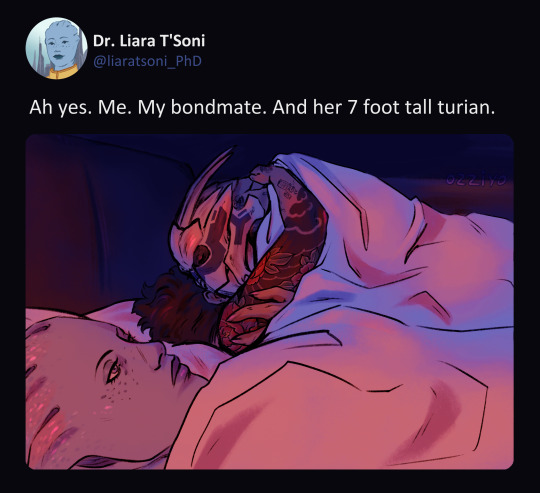

happy (belated) N7 day to Them
#mass effect#femshep#commander shepard#liara t'soni#garrus vakarian#shiara#shakarian#shiarakarian#??? is it a thing already??? if not i'm pioneering it through sheer spite let me have both of them goddammit#female shepard#video games#my art#my fanart#terra shepard#N7 day
2K notes
·
View notes
Text

Nathalie Schenck Laimbeer, the first woman hired by National City Bank of New York to be given the title of assistant cashier, is shown on February 13, 1925.
Laimbeer was born a socialite but, as a widow, began working during World War I. In 1919 she went into banking, as manager of the women's department of the U.S. Mortgage and Trust Company. "The women's department makes it easier for women to do their banking business themselves, rather than have it done for them by men," she said in a 1920 article. She was assistant cashier and head of the women's department at National City from 1925 to 1926, retiring at 44 due to health reasons. She died in 1929.
Photo: Associated Press
#vintage New York#1920s#women in banking#Nathalie Schenck Laimbeer#female firsts#vintage NYC#vintage banking#women pioneers
113 notes
·
View notes
Text



Wisconsin-Platteville Volleyball
#University of Wisconsin-Platteville#Wisconsin-Platteville Pioneers#volleyball girls#college volleyball#athlete#female athletes#college athlete#college girl#bikini#athletes in bikinis#d3 athletes
85 notes
·
View notes
Text
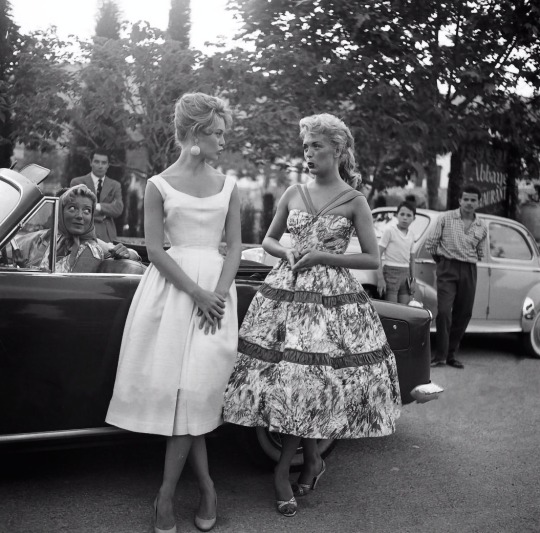

Brigitte Bardot and Coccinelle at Rose Queen's Festival in La Colle-sur-Loup on the French Riviera, June 19, 1956.
Brigitte Bardot et Coccinelle à Fête de la Reine de la Rose à La Colle-sur-Loup sur la Côte d'Azur, le 19 juin 1956.
#brigitte bardot#bb#coccinelle#jacqueline charlotte dufresnoy#french icons#french actresses#sex symbol#transwoman#pioneer#female impersonator#la colle-sur-loup#french riviera#côte d'azur#1956
80 notes
·
View notes
Text

Yellow Manula @ spółdzielnia ogniwo
#woman DJ#yellow manula#dj yellow manula#spółdzielnia ogniwo#Cracow Art Week#female dj#woman#plants#DJ#DJs#Djane#pioneer dj#headphones#books#książki#girl dj
27 notes
·
View notes
Text
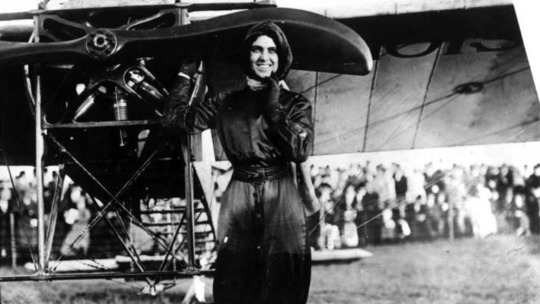
Harriet Quimby (1875-1912) First US Woman Pilot
Quimby was the first woman to receive a US pilot’s license, issued by the Aero Club of America in 1911. The following year, she was the first woman to fly across the English Channel. But unfortunately, she got little media attention for her accomplishment since it occurred the day after the Titanic sank.
Quimby competed in races and flying meets, always drawing a crowd. Like many early aviatrixes, Quimby capitalized on her popularity with the press, who nicknamed her the “China Doll.” Quimby was also a well-known Hollywood screenwriter.
Unfortunately, she died less than a year after getting her pilot’s license in an incident at a Boston aviation meet.
#Harriet Quimby#First US woman pilot#female pilot#women in aviation#aviation pioneers#China Doll#aviation history#aviatrixes#women pioneers#flying#aviation#pilot
30 notes
·
View notes
Text
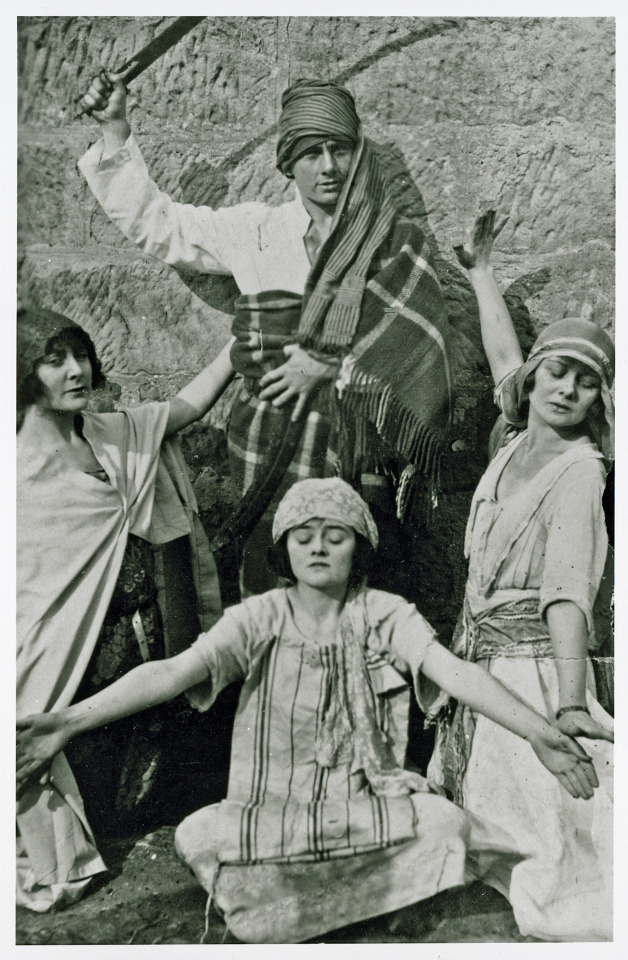
The McDonagh siblings, clockwise from top: John, Phyllis, Isabel and Paulette.
The siblings are wearing fancy dress and appear to be play-acting outdoors. The date and location of this photograph is unknown, but it may have been taken somewhere along the Hawkesbury River in New South Wales in the 1920s. | src NFSA
#McDonagh sisters#McDonagh siblings#silent era#1920s#NFSA#women artists#female filmmakers#Paulette McDonagh#vintage photography#fancy dresses#costume#Isabel McDonagh#Marie Lorraine#Phyllis McDonagh#Australia#Australian film pioneers
44 notes
·
View notes
Text
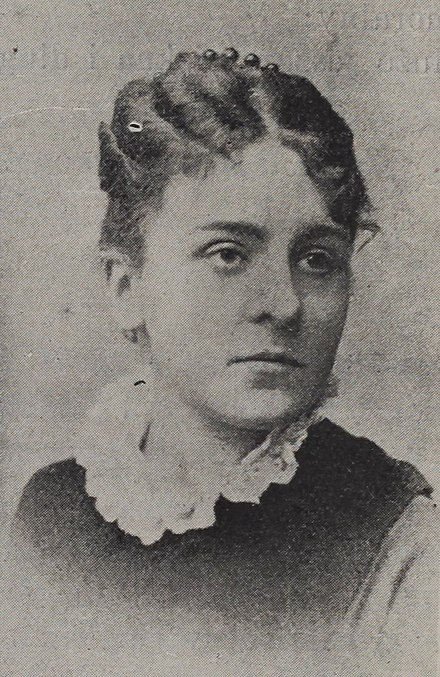
Anna Tomaszewicz-Dobrska (1854–1918) was the second Polish woman to become a medical doctor, and the first female Polish medical doctor to practice in Poland. She obtained her medical degree in 1877 in Zurich.
She knew that she wanted to be a doctor since she was a little girl, which was something unheard of at the time.
After obtaining her medical degree, she worked in Berlin and Vienna for a short time. However, she was not allowed to pass the state exam, which would have given her the right to practice medicine in Poland, and she was refused as a member of the Polish Society of Medicine because she was a woman.
She faced a huge amount of pure, disgusting misogyny for a simple fact that she was a female doctor.
She was called a whore. Men were claiming that she should stick to her womanly role and be only a wife and a mother. They also said that she would never be able to perform a successful surgery, because women couldn't stand a sight of blood. One man (whose name doesn't deserve to be mentioned) wrote a story about a female medical student who went to the university for a sole purpose of finding a husband.
Many highly respected doctors, writers, politicians and other important figures ridiculed her and did everything they could to make her miserable.
But she didn't give up.
She moved to St. Petersburg and passed the state exam there. This allowed her to practice women's health and pediatric medicine within the Polish Kingdom and Russia. In 1882 an epidemic of infection during childbirth broke out in Warsaw, and a few maternity shelters were opened; one of it was given to Anna to lead.
The number of deaths during and after childbirth was significantly lower under her lead than in any other place led by men.
She was one of the first doctors who recognized the importance of antiseptics (doctors simply washing their hands before a surgery wasn't so common back then). She was also empathetic towards her patients, which was something revolutionary at the time as well.
In 1896 she became the first person to perform a Caesarean section in Warsaw.
She's one of the many examples of women who fought for themselves despite men doing everything they could to break and humiliate her. She's truly a huge inspiration and deserves utter respect.
#radfem#radical feminism#radfem safe#radblr#feminism#women's rights#women's liberation#Anna Tomaszewicz-Dobrska#anna tomaszewicz#women in stem#female doctor#female pioneer#heroine#women in history#herstory#women's healthcare#pediatric medicine#childbirth#post partum care#caesarean section#medicine#women in medicine#medical student#antiseptics#important women#misogyny#women's oppression#feminizm#polska#polska historia
51 notes
·
View notes
Text
Famous/Important Women?
I'm trying to make a list of notable women in history (mostly for fun, partially to use against misogynists who think men did everything), and kinda not wanting to just look up a list online.
So; I'd like anyone who sees this post to add to the list. Even if all you can remember is a name and basic details, that's enough (I myself am mostly operating off memory, and then looking up details to fill in the blanks). If possible though, a date of birth/death and what they're most known for would be great, since those are the details I'm focusing on right now.
I'll add all new people/details to a list here on Tumblr so we're all on the same page info-wise.
List so far:
Enheduanna (𒂗𒃶𒌌𒀭𒈾), Birthdate unknown (c. 23rd century BCE), death date unknown (c. 23rd century BCE). High Priestess of Nanna/Sin (Sumerian Moon God), Daughter of Sargon (Founder of the Akkadian Empire), Earliest Known Named Author in History.
Nitocris (Greek: Νίτωκρις). Birthdate Unknown (c. 22nd century BCE), death date unknown (c. 22nd century BCE). Possible Queen of Egypt; If So, Would Have Been the Last Queen of the Sixth Dynasty of the Old Kingdom (c.2686 – 2181 BC).
Sobekneferu (Neferusobek). Birthdate unknown (mid 18th century BC), death date unknown (mid 18th century BC). Queen of Egypt, the Last Ruler of the Twelfth Dynasty of the Middle Kingdom, Reign Lasted 3 Years, 10 Months, and 24 days, Ending in c. 1802 BC.
Hatshepsut. Born ~1507 BC, died 1458 BC. Queen of Egypt (c. 1479 – 1458 BC), Fifth Pharaoh of the 18th Dynasty of Egypt, Prolific Builder, Reigned in Peace and Prosperity.
Sappho (Modern Greek: Σαπφώ (Sapphṓ), Aeolic Greek: Ψάπφω (Psápphō)). Born c. 630 BC, died c. 570 BC. Ancient Greek Poetess, Famous for Love Poems, Symbol of Lesbian Love, Known as “The Tenth Muse”.
Aristaineta. Birthdate unknown (3rd century BCE), death date unknown (3rd century BCE). Aetolian Woman, Dedicated a Large Monument at the Sanctuary of Apollo at Delphi Which Included Her Mother, Father, Son, and Herself, Which Was a Symbol of Social Status Usually Reserved For the Male Head of the Family.
Cleopatra (Cleopatra VII Thea Philopator). Born ~69 BC, died August 10, 30 BC. Queen of Egypt (51 – 30 BC), Last Active Ruler of the Ptolemaic Kingdom of Egypt, Only Known Ptolemaic Ruler to Learn the Egyptian Language.
Soseono (소서노) (Yeon Soseono (연소서노)). Born 66/7 BCE, died 6 BCE. Queen Consort of Goguryeo, One of the Three Kingdoms of Korea (37 – 18 BC), Queen dowager of Baekje (Another of the Three Kingdoms) (18 – 6 BC), Founder of Baekje (18 BC).
Heo Hwang-ok (허황옥) (Empress Boju (보주태후)). Born 32 AD, died 189 AD. Legendary Queen of Geumgwan Gaya, Mentioned in Samguk yusa (a 13th-Century Korean Chronicle), Believed to Originally be From India.
Septimia Zenobia (𐡡𐡶𐡦𐡡𐡩, Bat-Zabbai). Born ~240, died ~274. Queen of Palmyra (267 – 272), Queen of Egypt (270 – 272), Empress of Palmyra (272).
Hypatia. Born c. 350–370 AD, died March, 415 AD. Neoplatonist Philosopher, Astronomer, and Mathematician, Prominent Thinker in Alexandria, Taught Philosophy and Astronomy, Beloved by Pagans and Christians Alike.
Seondeok of Silla (선덕여왕) (Kim Deokman (덕만)). Born c. 580 or 610, died 20 February, 647. Queen of Silla, One of the Three Kingdoms of Korea (632 – 647), Silla's Twenty-Seventh Ruler and First Reigning Queen, Known as a Wise and Kind Monarch.
Jindeok of Silla (진덕여왕) (Kim Seungman (김승만)). Birthdate unknown, died 654. Queen of Silla, One of the Three Kingdoms of Korea (647 – 654), Silla’s Twenty-Eighth Ruler and Second Reigning Queen, Greatly Improved Relations With China.
Jinseong of Silla (진성여왕) (Kim Man (김만)). Born c. 865, died 897. Queen of Silla, One of the Three Kingdoms of Korea (887-897), Silla’s Fifty-First Ruler, Third and Last Reigning Queen, Said to be Smart by Nature, But Whose Reign Saw the Weakening of Unified Silla.
Lǐ Qīngzhào (李清照) (a.k.a. Yian Jushi (易安居士)). Born 1084, died c.1155. Chinese Poet and Essayist, Defiant Visionary, Known as “The Most Talented Woman In History.”
Matilda of England (Empress Matilda, Empress Maude, the “Lady of the English”). Born c. 7 February, 1102, died 10 September, 1167. Holy Roman Empress (1114 – 1125), Disputed Queen of England (1141 – 1148).
Joan of Arc (Jeanne d’Arc, Jehanne Darc). Born ~1412, died 30 May, 1431. French Knight, Martyr, and Saint, Burned at the Stake.
Catherine of Aragon (Katherine, Catharina, Catalina). Born 16 December, 1485, died 7 January, 1536. First Wife of King Henry VIII, Queen Consort of England (1509 – 1533).
Anne Boleyn. Born c. 1501 or 1507, died 19 May, 1536. Second Wife of King Henry VIII, Queen Consort of England (1533 – 1536), Martyr, Executed on False Charges.
Jane Seymour. Born c. 1508, died 24 October, 1537. Third Wife of King Henry VIII, Queen Consort of England (1536 – 1537), Died of Postnatal Complications.
Catherine Parr (Kateryn Parr). Born c. August, 1512, died 5 September, 1548. Sixth Wife of King Henry VIII, Queen Consort of England and Ireland (1543 – 1547), First English Woman to Publish an Original Work Under Her Own Name, Widowed, Remarried, Died in Childbirth.
Anne of Cleves (Anna von Kleve). Born 28 June or 22 September, 1515, died 16 July, 1557. Fourth Wife of King Henry VIII, Queen Consort of England (6 January 1540 – 12 July 1540), Marriage Annulled, Outlived All Other Wives.
Mary I of England (Mary Tudor). Born 18 February, 1516, died 17 November, 1558. First Undisputed Regnant Queen of England and Ireland (1553 – 1558), Daughter of Henry VIII and Catherine of Aragon.
Catherine Howard (Katheryn Howard). Born c. 1523, died 13 February, 1542. Fifth Wife of King Henry VIII, Queen Consort of England (1540 – 1541), Stripped of Title, Beheaded for ‘Treason’.
Elizabeth I of England (Elizabeth Tudor, the “Virgin Queen”). Born 7 September, 1533, died 24 March, 1603. Regnant Queen of England and Ireland (1558 – 1603), Last Monarch of the House of Tudor, Daughter of Henry VIII and Anne Boleyn.
Lady Jane Grey (Lady Jane Dudley (married name)). Born ~1537, died 12 February, 1554. Queen of England for ~9 days (~10 July, 1553 – 19 July, 1553) (disputed), First Cousin Once Removed of Mary I and Elizabeth I.
Mary, Queen of Scots (Mary Stuart). Born 8 December, 1542, died 8 February, 1587. Queen of Scotland (1542 – 1567), Forced Abdication, Imprisonment, Execution.
Elizabeth Báthory (Báthori Erzsébet). Born 7 August, 1560, died 21 August, 1614. Hungarian Countess, Subject of Folklore, Alleged Serial Killer.
Izumo no Okuni (出雲 阿国). Born c. 1578, died c. 1613. Actress, Shrine Maiden, Creator of Kabuki Theater (1603 – 1610), Recruited Lower-Class Women For Her Troupe, Primarily Prostitutes.
Anne, Queen of Great Britain. Born 6 February, 1665, died 1 August, 1714. Queen of England, Scotland, and Ireland (1702 – 1707), First Queen of Great Britain and Ireland (1707 – 1714).
Catherine the Great (Catherine II, Екатерина Алексеевна (Yekaterina Alekseyevna), born Princess Sophie Augusta Frederica von Anhalt-Zerbst). Born 2 May, 1729, died 17 November, 1796. Reigning Empress of Russia (1762 – 1796), Came to Power After Overthrowing Her Husband, Peter III. Under Her Long Reign, Russia Experienced a Renaissance of Culture and Sciences.
Marianne Mozart (Maria Anna Walburga Ignatia Mozart). Born 30 July, 1751, died 29 October, 1829. Musician (c. 1759 – 1769), Music Teacher (1772 – 1829), Sister of Wolfgang Amadeus Mozart.
Marie Antoinette (Maria Antonia). Born 2 November, 1755, died 16 October, 1793. Last Queen of France (1774 – 1792), Bad Reputation, Executed by Guillotine.
Jane Austen. Born 16 December, 1775, died 18 July, 1817. Novelist, Author of Sense and Sensibility (1811), Pride and Prejudice (1813), etc, Known For Her Subtle Criticism of the Nobility of the Time.
Mary Shelley (Mary Wollstonecraft Shelley, née Godwin). Born 30 August, 1797, died 1 February 1851. English Novelist, Author of Frankenstein (1818).
Elizabeth Barrett Browning. Born 6 March, 1806, died 29 June, 1861. Influential Poet, Author of How Do I Love Thee (Sonnet 43, 1845) and Aurora Leigh (1856).
Ada Lovelace (Augusta Ada King, née Byron, Countess of Lovelace). Born 10 December, 1815, died 27 November, 1852. Mathematician, Writer, First to Think of Other Uses for Computing Besides Mathematical Calculations.
Victoria I (Alexandrina Victoria). Born 24 May, 1819, died 22 January, 1901. Queen of England (1837 – 1901), Longest Reign of All Predecessors.
Florence Nightingale. Born May 12, 1820, died August 13, 1910. Pioneered Modern Nursing/Statistics, Social Reformer (~1853 – ?).
Emily Dickinson (Emily Elizabeth Dickinson). Born December 10, 1830, died May 15, 1886. Poet, Little-Known During Her Lifetime, Most Works Published Posthumously and Heavily Edited, Later Regarded as One of the Most Important Figures In American Poetry.
Louisa May Alcott. Born November 29, 1832, died March 6, 1888. Novelist, Short Story Writer, Poet, Author of Little Women (1868), Abolitionist, Feminist, Active in Temperance and Women’s Suffrage Movements.
Mademoiselle Abomah (Ella Williams). Born October, 1865, death date unknown (after 1920s). African-American Performer, Giantess Who Grew to Eight Feet Tall.
Anna Connelly. Born September 23, 1868, died ~1969. Inventor of the First Fire Escape (1887), One of the First Women to Patent an Invention Without Help From a Man.
Emma Goldman. Born June 27, 1869, died May 14, 1940. Anarchist Revolutionary, Political Activist, Writer, Played a Pivotal Role in Development of Anarchist Philosophy in North America and Europe In the First Half of the 20th Century.
Ella Ewing, “The Missouri Giantess” (Ella Katherine Ewing). Born March 9, 1872, died January 10, 1913. Giantess, Performer, Considered the World’s Tallest Woman of Her Era.
Helen Keller (Helen Adams Keller). Born June 27, 1880, died June 1, 1968. Blind/Deaf, Disability Rights/etc. Activist (1909 – ?), Author (1903 – ?).
Agatha Christie (Dame Agatha Mary Clarissa Christie, Lady Mallowan, DBE (née Miller)). Born 15 September, 1890, died 12 January, 1976. English Writer, Known For Her 66 Detective Novels and 14 Short Story Collections. Dubbed “The Queen of Crime”.
Amelia Earhart (Amelia Mary Earhart). Born July 24, 1897, died January 5, 1939 (in absentia). First Solo Female Pilot (1932), Women's Rights Activist, Lost at Sea (1937).
Ebony and Ivory (Margaret Patrick and Ruth Eisenburg). Born 1902 (Eisenburg)/1913 (Patrick), died 1996 (Eisenburg)/1994 (Patrick). Elderly Interracial Piano Duo (1983 – 1988), Disabled on Opposite Sides.
Virginia Hall (Virginia Hall Goillot, Codenamed Marie and Diane, Known as “Artemis” and ”The Limping Lady” by the Germans). Born April 6, 1906, died July 8, 1982. WWII-Era Intelligence Agent (1940 – 1945), Considered “The Most Dangerous of All Allied Spies” by the Gestapo, Later Joined the CIA (1947 – 1966), Had Prosthetic Leg.
Li Zhen (李贞) (Li Danmeizi (旦妹子)). Born February, 1908, died March 11, 1990. Revolutionary (1927 – ?), First Female General of the People’s Liberation Army (1955 – ?).
Mother Teresa (Mary Teresa Bojaxhiu (born Anjezë Gonxhe Bojaxhiu)). Born 26 August, 1910, died 5 September, 1997. Albanian-Indian Catholic Nun, Founder of the Missionaries of Charity.
Rosa Parks (Rosa Louise McCauley Parks). Born February 4, 1913, died October 24, 2005. Civil Rights Activist (1943 – ?), Played a Pivotal Role in the Montgomery Bus Boycott (1955), Became Symbol of Resistance to Racial Segregation.
Judy Garland (Frances Ethel Gumm). Born June 10, 1922, died June 22, 1969. Award-Winning Singer/Actress (1924 – 1969), Starred in The Wizard of Oz (1939), A Star Is Born (1954), etc.
Stephanie Kwolek (Stephanie Louise Kwolek). Born July 31, 1923, died June 18, 2014. Award-Winning Chemist, Inventor of Kevlar (1965).
Marilyn Monroe (Norma Jeane Mortenson). Born June 1, 1926, died August 4, 1962. Award-Winning Actress (1945 – 1961), Pop/Sex Icon of Hollywood’s Golden Age, Starred in Gentlemen Prefer Blondes (1953), Some Like It Hot (1959), etc.
Ursula K. Le Guin (Ursula Kroeber Le Guin). Born October 21, 1929, died January 22, 2018. American Novelist, Best Known For Her Works of Speculative Fiction, Author of the Earthsea Series (1964 – 2018), The Left Hand of Darkness (1969), The Dispossessed (1974), etc.
Aretha Franklin (Aretha Louise Franklin). Born March 25, 1942, died August 16, 2018. Award-Winning Gospel/Rock/RnB Singer, Songwriter, Pianist, Civil Rights Activist, Record Producer (1954 – 2017).
Liza Minnelli (Liza May Minelli). Born March 12, 1946, Still Living. Award-Winning Actress, Singer, Dancer, and Choreographer (1961 – present), Daughter of Judy Garland.
Afeni Shakur (Afeni Shakur Davis, Born Alice Faye Williams). Born January 10, 1947, died May 2, 2016. American Political Activist, Member of the Black Panther Party (1968 – 1971), Mother of Tupac Shakur.
Assata Shakur (Assata Olugbala Shakur (Born JoAnne Deborah Byron), A.k.a. Joanne Chesimard). Born July 16, 1947, Still Living. American Political Activist, Convicted of Murder, Former Member of the Black Liberation Army, One of the FBI's "Most Wanted Terrorists", Friend of Afeni Shakur & Mutulu Shakur, Often Described as Their Son Tupac Shakur's "Godmother" or "Step-Aunt", Currently a Fugitive, in Asylum in Cuba.
(P.S. if I got anything wrong, feel free to correct me.)
#women in history#historical figures#important people#list#help#women's rights#activist#activism#activists#inventors#pilot#pilots#aviation#queens#royalty#science#scientists#inventions#kevlar#Cleopatra#ancient egypt#egypt#Anna Connelly#Helen Keller#Amelia Earhart#female pilot#Pioneer#pioneers#lost at sea#Rosa Parks
12 notes
·
View notes
Text

Self portrait of Bertha Wehnert-Beckmann
1850 (ca)
1 note
·
View note
Photo

Ούτοι γυναικός εστιν ιμείρειν μάχης.**
- Aeschylus
Surely it is not for a woman to long for battle.**
Maureen Dunlop flew far faster planes than any of her peers, including Amelia Earhart. She flew Spitfires, Lancasters, Hurricanes and Mosquitos, and proved the dream of Picture Post's photographer when, on emerging from the cockpit of a Fairey Barracuda, the sun on her hair, she made the cover shot of the popular Picture Post that sold thousands of copies in autumn 1944.
Dunlop mastered the controls of 28 different single-engine and 10 multi-engine aircraft types, which also included the Hawker Typhoon, Hawker Tempest, Avro Anson, Mustang, Bristol Blenheim and Vickers Wellington.
The ATA did a gruelling day-to-day job, plying the skies under constant threat from inclement weather the length and breadth of Great Britain, at a time when the nature of flying was changing in popular consciousness from having been a pre-war novelty and the subject of record attempts and joyrides, to being a vital part of the war effort.
The women among its members also had to put up with opposition from men who had little faith in their ability – or perhaps misplaced chivalry – such as Air Chief Marshal Sir Trafford Leigh-Mallory, who would not let women pilots cross the Channel, or who were merely rude, such as the RAF men who joked of the first all-women aircraft ferrying pool at Hamble in Hampshire as "the lesbians' pool".
Dunlop, like many of her female colleagues, said she wished she could have flown in combat: "I thought it was the only fair thing. Why should only men be killed?"

The ATA service had been founded on the initiative of Gerard "Pop" d'Erlanger, a director of British Airways and banker, who bent the ear of Sir Francis Shelmerdine, Britain's director-general of Civil Aviation, against opposition from the RAF, which preferred to use its own pilots until shortages forced it to relent. ATA pilots had to make the most of training that was, some avowed after the war, inadequate. Instrument flying was not taught, but the service would have ground to a halt if pilots had not broken rules forbidding them to fly in bad weather. Women had to have a minimum of 500 hours' solo flying before joining the ATA, twice as much as the 250 hours originally laid down in September 1939 for the first members, all men. She was one of the 164 female members of the wartime Air Transport Auxiliary (ATA), of which one in ten pilots died while transporting aeroplanes between factories and military airfields
Maureen Dunlop, the second of three children of Eric Chase Dunlop, an Australian farm manager employed by a British company in Argentina, and his English wife, Jessimin May Williams, began flying at the age of 15, when she joined the Aeroclub Argentino. Two years later she had obtained her pilot's licence. Living with her parents, older sister Joan and younger brother Eric on estancias in Patagonia, she was educated by a governess and briefly attended St Hilda's College, an English school at Hurlingham in Buenos Aires. The example of her father's British military experience as a volunteer with the Royal Field Artillery in the First World War, together with an article in Flight magazine, inspired her to sail to England and offer her flying skills to the ATA.

She came through the war uninjured, but once had to make a forced landing when a faulty engine developed heavy vibration (an incident for which she was absolved of responsibility), and once was flying a Spitfire when a badly fitted cockpit cover blew off. After the war she qualified in England as an instructor and, returning to Argentina, flew for the Argentine Air Force and taught its pilots, as well as flying commercially. In 1973 she and her husband, Serban, a retired Romanian diplomat she met at a British Embassy function in Buenos Aires, returned to England, where for the rest of her life, on a farm in Norfolk, she followed her second love - breeding Arab horses. Dunlop built up an outstanding knowledge of bloodlines. She died in 2012.
141 notes
·
View notes
Text

Viola Gentry poses at Roosevelt Field in Mineola after breaking the first non-refueling endurance record for women, December 20, 1928. Gentry, once a member of the office staff at the Roosevelt Field Flying School, flew for 8 hours, 6 minutes and 37 seconds.
Photo: Associated Press via WHNT
#New York#NYC#vintage New York#1920s#Viola Gentry#aviation#vintage aviation#early aviation#female aviator#Roosevelt Field#December 20#Dec. 20#aviatrix#aviation pioneers#early aviators
414 notes
·
View notes
Text



Point Park Track & Field
#Point Park University#Point Park Pioneers#track & field#track girls#college track & field#athlete#female athletes#college athlete#college girl#bikini#athletes in bikinis#naia athletes
55 notes
·
View notes